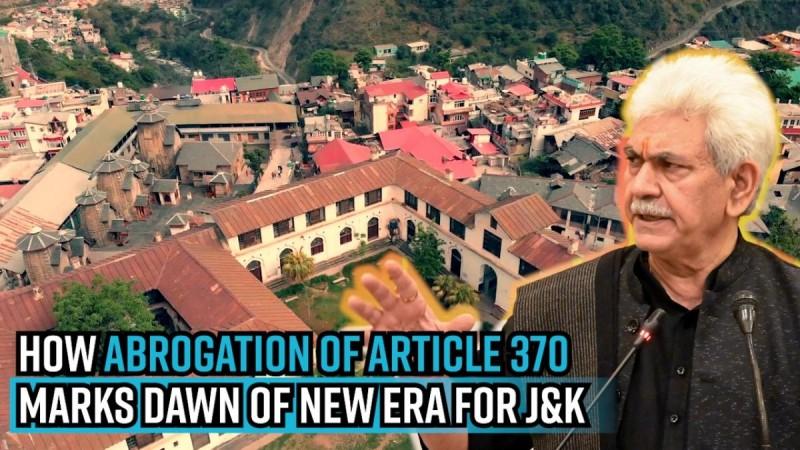
In a landmark ruling, the Supreme Court has delivered a decisive verdict on Article 370, reshaping the constitutional landscape and setting the stage for transformative changes in Jammu and Kashmir. The key highlights and conclusions of the judgment, articulated by Chief Justice Chandrachud, present a nuanced understanding of the historical and legal dimensions of this complex issue.
Temporary Nature of Article 370:
The Court emphatically affirmed that Article 370 was a temporary provision introduced to serve transitional purposes during war conditions in the state. It was strategically placed in Part 21 of the Constitution.
Constituent Assembly's Role:
The recommendation of the constituent assembly, while not binding on the president, was crucial during the transitional period. When the constituent assembly ceased to exist, the special conditions justifying Article 370's introduction ceased, but the article remained due to the persisting situation in the state.

Presidential Power and Validity:
The Court upheld the validity of the president's power to issue the notification, emphasizing that the use of this power was not mala fide. The continuous exercise of this power reflected the ongoing process of integration.
Applicability of Indian Constitution to Jammu and Kashmir:
The Court clarified that all provisions of the Indian Constitution can be applied to Jammu and Kashmir, dispelling any claim of non-application of mind. Consultation between states is only necessary when amending the state constitution to align it with the Indian Constitution.
Future Steps:
The Court directed the restoration of statehood to Jammu and Kashmir, and it called for elections to the Legislative Assembly by September 2024. This marks a significant step towards normalizing the political situation in the region.
Justice Kaul's Epilogue:
Justice Kaul highlighted the profound impact of insurgency, population migration, and the intergenerational trauma faced by the people of Jammu and Kashmir. The state, he noted, requires healing and restoration.
Justice Khanna's Perspective:
Justice Khanna emphasized the legal intricacies, acknowledging the flaw in amending Article 370 through CO 272 but validating the same objective through Article 370(3) and CO 273.
In essence, the Supreme Court's judgment not only elucidates the legal intricacies surrounding Article 370 but also addresses the historical context and the need for healing in the region. The directives for statehood restoration and upcoming elections signal a pivotal moment in the journey towards normalcy and constitutional integration.
Chief Justice Chandrachud sums up conclusions:
- Jammu and Kashmir does not retain any element of sovereignty after instrument of accession was signed;
- No internal sovereignty for Jammu and Kashmir;
- Challenge to the proclamation of Presidential rule is not valid;
- Exercise of power of President must have a reasonable nexus with the object of presidential rule;
- Power of Parliament to legislate for State cannot exclude law making power;
- Article 370 was a temporary provision;
- When Constituent Assembly was dissolved only the transitory power of the Assembly ceased to exist and no restriction on Presidential order;
- Para 2 of CO 272 by which Article 370 was amended by amending article 367 was ultra vires as interpretation clause cannot be used for amendment;
- President use of power was not mala fide and no concurrence needed with State
- Para 2 of CO 272 in exercise of power under Article 370(1)(d) applying all provisions of Indian constitution to Jammu and Kashmir was valid;
- The continuous exercise of power by the President shows the gradual process of integration was ongoing. Thus CO 273 is valid;
- Constitution of Jammu and Kashmir is operative and is declared to have become redundant;
- Presidential use of power not mala fide
- Solicitor General made statement that Statehood will be restored to Jammu and Kashmir. We uphold the decision to carve out Union Territory of Ladakh. We direct Election Commission of India (should hold) polls under Section 14 of the Reorganisation Act and Statehood (should be restored) at the earliest.















